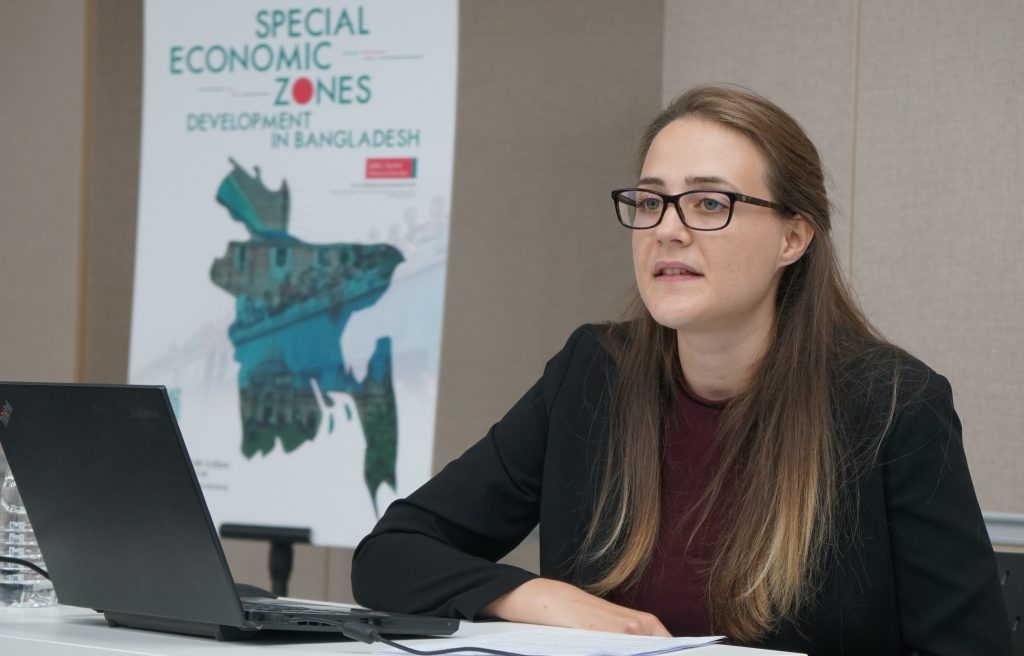On the afternoon of October 22, 2019, the third session of the Park Economy and Economic Development Lecture Series
titled “The Development of Special Economic Zones in Bangladesh” was held at the Conference Room 205 of the Central Main Building of Tsinghua University. Marianne Männlein, Program Research Specialist of the Institute of New Structural Economics of Peking University was specially invited to give a lecture, taking the development of Bangladesh’s special economic zones as an example to introduce special economic zones from the perspective of new structural economics.
In 2010, the Bangladesh Economic Zone Authority was established, aiming to establish 100 economic zones across the country. Compared with the existing zones in Bangladesh, the special economic zones have a wider range and include the private sector and other partners. A study of new projects in Bangladesh found that the domestic private sector is enthusiastically joining in, and some private economic zones are already operating. However, administrative, financing, and infrastructure bottlenecks hindered the progress. Some policies to streamline the administrative processes of the special economic zone have been approved but have not yet been implemented. System-wide deficiencies that affect the development of the entire industry are still the main concerns of Bangladeshi business owners. In particular, the financing channels for long-term investments are restricted and the supporting infrastructure is seriously blocked. As for public economic zones, field research shows that their development speed is relatively slow, and none of them are currently operational. In general, economic zone projects are still in the early stages of development and rules are being drafted. Although many projects have been approved, few of them have actually started.

Marianne further pointed out that a comparative analysis of the historical development of special economic zones in India, Pakistan and Bangladesh shows that the conditions for the success of the plans can be summarized as follows: Enjoy political commitment within the broader economic strategy; supported by specialized policies and governance frameworks; and implemented transparently and adaptively. In comparison, China’s experience in special economic zones can also provide inspirations to Bangladesh and other developing countries. In 1978, China’s special economic zone was regarded as a testing ground for economic reforms. Since then, China’s special economic zones have developed into various models to prepare China for the new challenges brought about by the evolution of the economic structure, which is quite inspiring for Bangladesh’s new special economic zones. The reality in Bangladesh is that, in addition to its early industrialization success in low value-added garment exports, the country is now facing the challenge of economic upgrading and diversification. Marianne particularly emphasized that, in general, it is a very important step for southern countries to direct scarce resources to special economic zones to maximize their chances of success. Special economic zones also provide a unique platform for direct South-South cooperation. As an investment channel, special economic zones help to achieve connectivity between southern economies, such as the private Chinese overseas special economic zones in Africa or the planned inter-government special economic zones in Bangladesh.
By Wang Zijing Photography: Liu Jing




